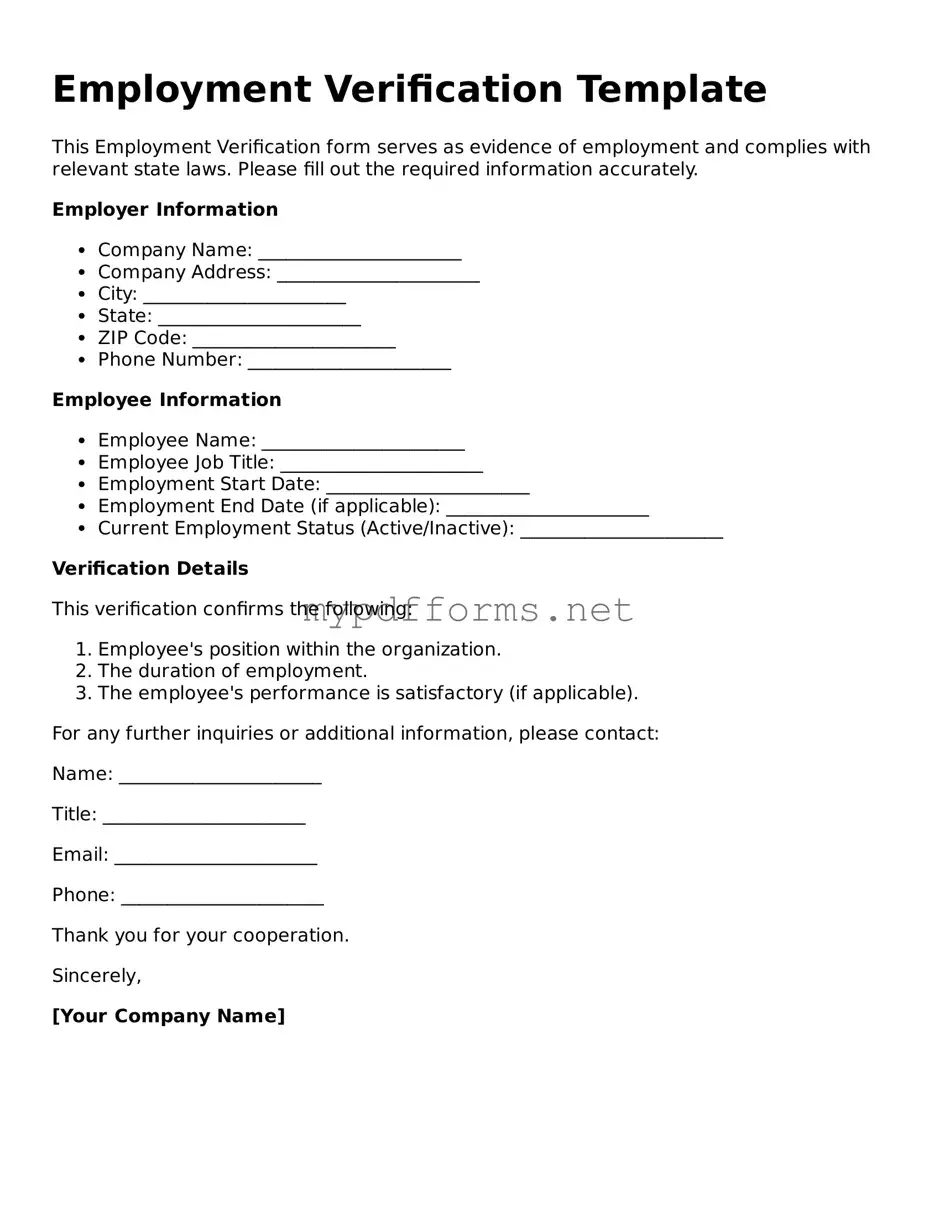Employment Verification Template
The Employment Verification form is a crucial document used by employers to confirm a job candidate's employment history, including their job title, dates of employment, and salary information. This form serves as a vital tool in the hiring process, ensuring that potential employees meet the necessary qualifications and have a reliable work history. Understanding how to fill out this form accurately can streamline your hiring process and enhance your credibility as an employer.
Ready to simplify your hiring process? Fill out the Employment Verification form by clicking the button below!
Modify Document Here
